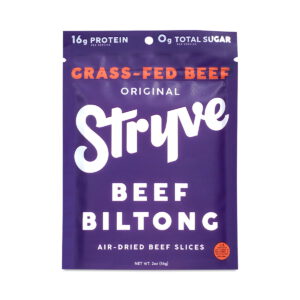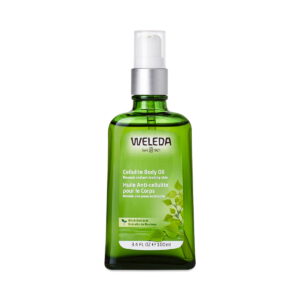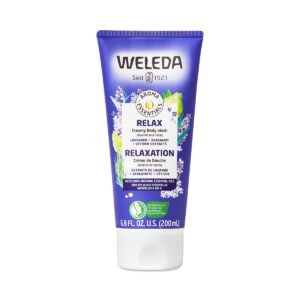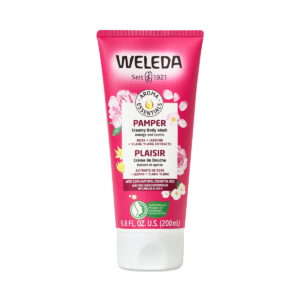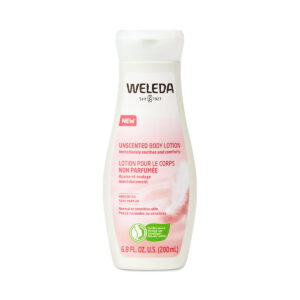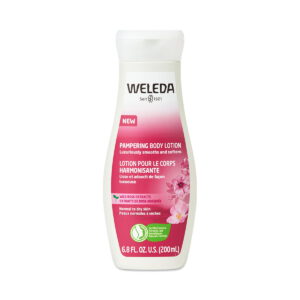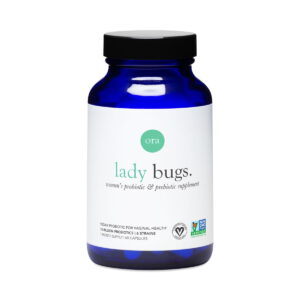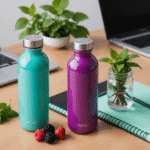- Understanding the Importance of Hydration
- Setting a Daily Water Intake Goal
- Incorporating Hydrating Foods
- Using Reminders and Apps
- Choosing the Right Containers
- Maintaining Hydration During Activities
When it comes to grocery shopping, planning is essential for maintaining healthy habits, especially during a busy day. Whether you are shopping in-store or online, being strategic can help you make the best choices for your diet. For families, fitness enthusiasts, vegans, and busy professionals, here are some tips to enhance your grocery shopping experience.
Start by making a list of the foods you need. This helps prevent impulse buys and ensures you focus on the essentials. When crafting your list, prioritize whole, unprocessed foods, as these provide essential nutrients for hydration and overall well-being. Aim to include:
- Fruits and vegetables: Opt for high-water content items like cucumbers, watermelons, oranges, and lettuce. These not only hydrate but also provide vital vitamins and minerals.
- Whole grains: Brown rice, quinoa, and whole grain bread are great for sustained energy, especially during active days.
- Legumes: Beans, lentils, and chickpeas are affordable protein options for vegans and a healthy addition to salads and soups.
- Nuts and seeds: Almonds, chia seeds, and flax seeds offer healthy fats and can be added to smoothies or yogurt for extra nutrition.
When shopping for healthy foods, look for local and organic produce where possible. Farmer’s markets often provide seasonal options that are fresher and support local agriculture. Organic foods can also be a great investment, particularly for items on the Dirty Dozen list, which are known to carry higher pesticide residues, such as strawberries and spinach (Environmental Working Group).
If you’re on a budget, consider buying frozen fruits and vegetables. They are picked at peak ripeness and can retain their nutrient content, offering a versatile and cost-effective way to incorporate more hydrating foods into meals. Additionally, bulk buying essentials like oats, beans, and rice can save money and reduce packaging waste.
For safety when grocery shopping, especially online, check for reviews and verify the store’s reputation. Ensure that produce is fresh by looking for clear labeling and understanding return policies. If you have allergies or dietary restrictions, carefully read ingredient lists and labels before purchasing. Using trusted delivery services can also prevent issues related to ingredient safety.
Make the experience enjoyable by exploring new recipes that include your hydrating foods or by trying out local items that you can share with your family. This not only enhances your meals but also develops a greater appreciation for your food choices, ultimately encouraging better hydration tips and healthy habits every day.
Setting a Daily Water Intake Goal
To determine the right amount of water to drink daily, various factors need to be considered, including individual health, level of physical activity, and environmental conditions. A common recommendation is to aim for approximately 8 to 10 cups of water per day, which aligns with the well-known “8×8 rule” (eight 8-ounce glasses). However, this can vary significantly based on personal circumstances.
It is essential to recognize that not all water intake has to come from beverages alone. Foods also contribute significantly to hydration levels. For instance, foods with high water content—such as fruits and vegetables—play a crucial role in meeting daily hydration goals. A balanced approach that incorporates both beverages and hydrating foods can make reaching daily water intake goals easier and more enjoyable.
To better understand the variety of hydration sources, consider the following table showcasing different drinks and foods, along with their corresponding water content:
| Food/Drink | Water Content (%) |
|---|---|
| Cucumber | 95 |
| Watermelon | 92 |
| Strawberries | 91 |
| Spinach | 91 |
| Tomatoes | 95 |
| Orange | 86 |
| Milk | 87 |
| Herbal Tea | 99 |
| Plain Water | 100 |
When setting a daily water intake goal, it can be beneficial to personalize it based on specific needs. For example, a more active individual might require additional hydration compared to someone with a sedentary lifestyle. Factors such as climate and seasonal temperature variations also influence how much water one should drink. Hot weather can accelerate fluid loss through perspiration, necessitating an increase in intake.
Additionally, keeping track of water consumption can enhance awareness and encourage consistent drinking habits. This could involve marking a water bottle with measurement lines or using an app designed for tracking hydration. Creating a routine around drinking water, such as having a glass when waking up, during meals, and throughout the day, fosters healthy habits.
Ultimately, establishing a clear daily water intake goal tailored to your lifestyle, preferences, and needs supports better hydration and contributes significantly to maintaining energy levels and overall well-being throughout a busy day.
Incorporating Hydrating Foods

Incorporating hydrating foods into your diet is a fun and flavorful way to boost your hydration levels, especially during those hectic days. When grocery shopping, focus on selecting items that not only quench your thirst but also pack a nutritional punch. Aim to include a variety of vibrant fruits and vegetables rich in water content, as well as wholesome grains and legumes that support overall health.
Start your shopping spree with fruits that are naturally high in water. Think juicy watermelons, refreshing cucumbers, and plump oranges. Here are some hydrating favorites:
- Watermelon: With 92% water content, this summer staple is not only hydrating but also packed with vitamins A and C.
- Cucumbers: A great addition to salads and snacks, cucumbers offer a crisp crunch while being 95% water.
- Strawberries: At 91% water, they’re perfect for smoothies or as a standalone snack.
- Tomatoes: Rich in antioxidants, tomatoes are versatile and delicious, with a water content of about 95%.
When considering your grocery list, look for foods that not only hydrate but also nourish. Whole grains are particularly beneficial; they provide essential nutrients and fiber. Include items such as:
- Quinoa: A complete protein that can be enjoyed hot or cold, quinoa provides great hydration when cooked with water or broth.
- Brown rice: A hearty option that can complement many meals while keeping you full and hydrated.
- Oats: Perfect for breakfast, oats made with water or plant-based milk create a warm, hydrating meal.
Don’t forget about legumes! Beans, lentils, and chickpeas can help round out your meals with protein, fiber, and hydration. These options are budget-friendly, nutritious, and can be easily incorporated into salads, stews, and wraps.
When it comes to shopping for local and organic foods, farmer’s markets are your best friend. Choose seasonal produce to get the best flavor and freshness while supporting your local economy. Remember, organic fruits and vegetables can significantly reduce your exposure to pesticides, so prioritize purchasing organic versions of the Dirty Dozen for a safer choice (Environmental Working Group).
If you’re on a budget, look for frozen fruits and vegetables as they are often just as nutritious as fresh ones and can be stored longer without spoilage. Bulking up on items like dried beans or lentils also saves money and provides versatile options for meals. For those busy days, pre-prepped items like chopped veggies or ready-to-eat fruit cups can help you stay hydrated without the hassle.
Lastly, prioritize safety when grocery shopping—both online and in-store. For online purchases, check customer reviews and ensure that the site is reputable. Always inspect packaged foods for freshness and proper seals when shopping in-store. If you have food allergies, read labels carefully to avoid allergens and ensure ingredient safety.
Enhancing your shopping habits with these hydrating foods not only contributes to better hydration but also encourages healthy habits that can sustain you through those busy days ahead. So next time you’re at the grocery store, keep these tips in mind for a refreshing approach to hydration!
Using Reminders and Apps
In today’s fast-paced world, it’s easy to forget to drink water amidst all the responsibilities. Thankfully, technology offers solutions to help manage our hydration efficiently. With the help of reminders and apps, you can seamlessly integrate hydration into your daily routine, ensuring that you meet your water intake goals even on the busiest days.
Many hydration tracking apps are designed to make staying hydrated easier and more enjoyable. By inputting personal information such as age, weight, and activity level, these apps can calculate a tailored daily water intake goal. Most of these applications include features that allow you to log your water consumption throughout the day, providing visual graphs that display your progress. This data can motivate you by showing how consistent efforts lead to reaching hydration goals.
Setting reminders is another effective way to maintain your hydration. Most smartphones have built-in alarm functions that can notify you at regular intervals to drink water. You can customize these reminders based on your schedule, ensuring that you are prompted to hydrate before or after meetings, during work breaks, or at mealtimes. A simple, scheduled reminder can drastically reduce the chances of forgetting to drink, making hydration an effortless part of your day.
In addition to reminders, some apps allow you to integrate social features, where you can challenge friends or family to meet hydration goals together. This element of gamification can turn hydration into a fun, shared activity, encouraging healthy habits while fostering a sense of community and accountability. It can be surprisingly motivating to see others achieving their goals, pushing you to keep up with your own.
These digital tools also often provide tips and suggestions tailored to your preferences and goals. Whether it’s recommending ways to enhance the taste of plain water with natural flavorings like cucumber or mint, or presenting creative ways to integrate hydration into meals, these features can transform your approach to staying hydrated.
Furthermore, many hydration apps enable users to sync with wearable devices, which collect data on physical activity. This information can be crucial since more active individuals may require additional fluid intake. By understanding your hydration needs based on your activity level, these apps empower you to make informed choices that keep you at your best throughout the day.
Incorporating reminders and apps into your hydration routine not only enhances your ability to maintain healthy habits but also ensures that staying hydrated becomes second nature, even amid a busy day. As the saying goes,
“You can’t pour from an empty cup; take care of yourself first.”
Prioritizing your hydration as part of your daily activities enables you to be more energized and productive, helping you navigate the demands of your schedule with ease.
Choosing the Right Containers
 Choosing the right containers can significantly impact your ability to stay hydrated during a busy day. The containers you select can reflect your personal preferences while also serving practical functions that ensure ease of access and portability. When shopping for hydration containers, consider the material, size, and usability.
Choosing the right containers can significantly impact your ability to stay hydrated during a busy day. The containers you select can reflect your personal preferences while also serving practical functions that ensure ease of access and portability. When shopping for hydration containers, consider the material, size, and usability.
First, examine the materials available. Stainless steel bottles are an excellent choice as they are durable, insulated, and able to maintain the temperature of your beverages, whether hot or cold. Unlike plastic, which can leach harmful chemicals when exposed to heat or sunlight, stainless steel offers a safe option for daily hydration. Additionally, glass containers can provide a clean, taste-free experience and are fully recyclable, although they may not be as portable for active lifestyles.
Next, the size of your water container matters. A larger bottle can minimize the number of refills needed throughout the day, while a smaller, lightweight option is often more convenient for carrying. Assess your daily routine: if you’re constantly on the move, a smaller, easy-to-carry bottle may be ideal. On the other hand, if you’re at a desk or stationary for long periods, a larger container can serve as a constant reminder to drink more water.
Remember the usability factor too. Look for features that encourage frequent hydration, such as a flip-top lid for easy access during activities or a straw for sipping without tilting the container. Some bottles even come with measurement markings, helping you track your intake at a glance. Additionally, consider ones equipped with a filter or fruit infusion options to enhance the flavor of your water. By transforming plain water into a refreshing beverage with fruits or herbs, you can find even more motivation to drink throughout your busy day.
Furthermore, aesthetics can also play a role. Choosing a container that reflects your style may help you feel more inclined to keep it handy and filled. Unique colors, customized designs, or even those promoting eco-friendliness can become a source of inspiration for maintaining your hydration.
Lastly, think about the environmental impact of your container choices. Reusable bottles reduce reliance on single-use plastics, which is a sustainable habit that can contribute positively to your health as well as the planet’s health. By selecting the right hydration containers, you not only develop healthier habits but also cultivate awareness about environmental responsibility.
- What is the best type of water bottle for daily use?
- Stainless steel bottles are highly recommended for daily use because they are durable, insulated, and do not leach harmful chemicals. Glass bottles offer a clean taste and are environmentally friendly, while BPA-free plastic options can be lightweight and convenient.
- How much water should I carry with me daily?
- The amount of water you should carry depends on your hydration goals and activity level. A good guideline is to have at least 32 ounces available for a busy day, allowing for easy refills as needed.
- Can I infuse my water for better taste?
- Yes! Using containers with infusion features allows you to add fruits, herbs, and even vegetables to your water, enhancing flavor and encouraging more frequent hydration.
- What if I forget to drink water throughout the day?
- Using reminders on your phone or hydration-tracking apps can help you stay on track. Setting alarms or using smart bottles that remind you to hydrate can be effective strategies.
- How can I keep my water cold during hot days?
- Insulated stainless steel bottles are perfect for keeping beverages cold. You can also add ice cubes to your water before sealing the bottle to maintain a refreshing temperature for longer.
- Are there any eco-friendly options for hydration containers?
- Reusable bottles made of stainless steel or glass are excellent eco-friendly alternatives to plastic. Look for brands that focus on sustainability and consider using containers that are fully recyclable.
- What’s the importance of measuring my water intake?
- Measuring your water intake helps ensure that you meet your hydration goals, especially on busy days. Tracking intake can motivate you to drink more frequently and maintain healthier hydration habits.
Maintaining Hydration During Activities
Maintaining hydration during activities is crucial, especially when life gets busy and you’re constantly on the go. Whether you’re running errands, working out, or just navigating a hectic schedule, it’s essential to have a hydration strategy in place. Here are some practical tips to help you stay hydrated during those active moments.
First and foremost, always carry water with you. Invest in a suitable portable water bottle that fits your lifestyle. Consider options that are insulated to keep your water cold throughout the day, especially during hot weather or vigorous activities. A good rule of thumb is to aim for a container that holds at least 32 ounces, as it reduces the frequency of refills needed. Remember to fill it up whenever you head out!
For pre-planned outings, consider your hydration options in advance. If you know you’ll be exercising or spending a significant amount of time outdoors, preparing with hydrating snacks can help. Foods such as:
- Watermelon: A hydrating fruit that’s easy to pack in chunks.
- Celery sticks with hummus: This combo offers hydration along with healthy fats and proteins.
- Chilled grapes: Perfect for a quick snack that refreshes and hydrates.
During physical activities, especially prolonged workouts or sports, electrolyte drinks can help maintain fluid balance. Look for natural options with minimal added sugars or consider making your own by mixing water with a pinch of salt and a splash of lemon. This not only quenches your thirst but also replenishes lost electrolytes.
Also, utilize technology to your advantage. If you’re engaging in activities that might distract you from hydrating, set reminders on your phone or use a hydration tracking app. These can prompt you to take sips regularly, ensuring you don’t forget to hydrate amidst your busy day.
Additionally, listen to your body. Thirst can often be a sign of dehydration, and when you feel fatigued, your hydration levels may already be suffering. Carrying a handy container with you can make it easier to sip water as needed, rather than waiting until you are thirsty. Furthermore, in climates that are particularly dry or during physical exertion, your water needs increase, so plan accordingly.
One additional tip for those who are often pressed for time: choose to incorporate hydration breaks into your schedule. This can transform your hydration habits into a part of your routine. For instance, you might decide to drink a glass of water during every break at work or after every significant task you complete at home. It effectively reinforces healthy habits without overwhelming you.
Lastly, prioritize safety, especially when engaging in outdoor activities. Make sure to avoid drinking directly from water sources that may be contaminated. If you are out for an extended period, bring along a portable water purifier just in case. Safe and clean water is imperative for optimal hydration.
By consciously planning your hydration during bustling days filled with activities, you can ensure that you remain energized and refreshed. These hydration tips can be easily woven into your busy lifestyle, supporting your overall health and keeping you on track with your hydration goals!
New Customers Offer!
Free Gift for the new customer
$24 Value, When You Subscrib Visit Thrive Market

